Mating – Reach reproductive success
Content
Why proper insemination technique is important for success
Careful attention to heat stimulation, timing of insemination and the insemination technique can help you attain the full reproductive potential of DanBred.
Mating for reproductive success
DanBred breeding animals are exceptional when it comes to reproductive performance. Strict compliance to best practice insemination on-farm will release the DanBred potential for reaching uncompromised lifetime production and world-class productivity along the entire production chain. Trials show that careful attention to heat detection, heat stimulation, timing of insemination and the insemination technique have a significant impact on reproductive success (Sørensen, 2009).
Insemination for improved fertility
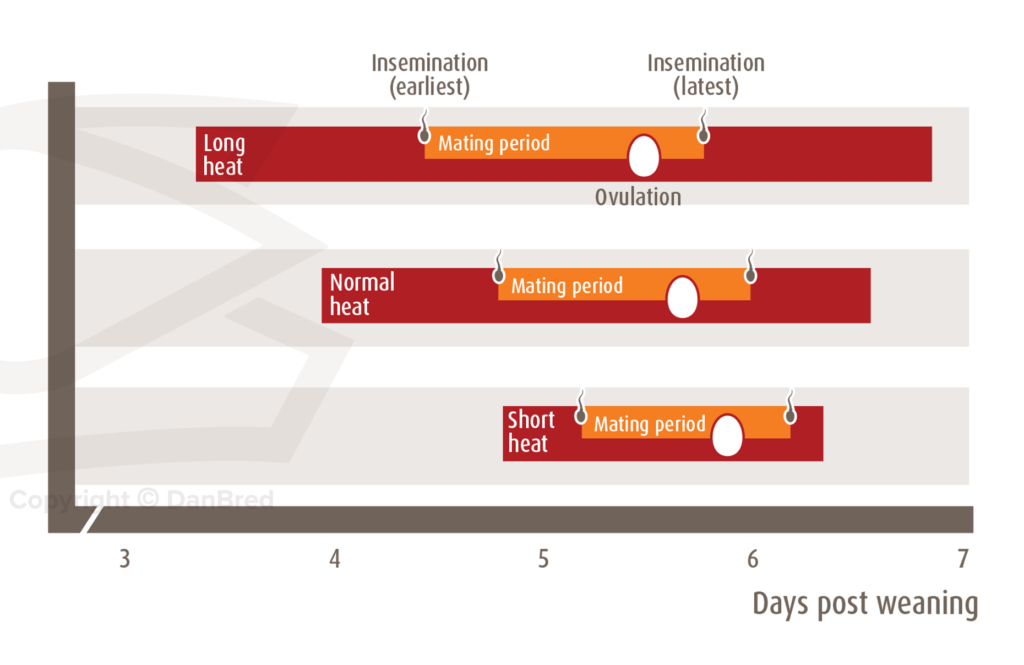
At the point of insemination, the achievement of improved fertility and maximised farrowing rates rely on some key success factors: timing, stimulation and frequency of insemination. The first day the sow shows standing heat is the first day of oestrus. Oestrus is defined as the period during which the gilts and sows are receptive to the boar, ovulating and capable of conceiving. Reproductive performance can be increased if standing heat is used as guideline for timing of mating (Flowers 1996). In practice, this means that a sow which shows standing heat shortly after weaning will generally ovulate relatively late. Conversely, sows that show heat 6 days or more after weaning can ovulate shortly after standing heat (Nissen et.al., 1997). Trials have shown that structured human stimulation before insemination resulted in an increased farrowing rate of 6%, compared to sows where none or only a limited amount of stimulation was performed. The stimulation impacts the release of oxytocin, which helps contractions in the muscle cells of the uterus, creating an efficient boost of semen transport into the uterine horns (Madsen et. al. 2001). Frequency has showed important as inseminating twice per heat will give an extra 0.5 total born per litter (Hedeboe, 2006). Furthermore, significantly more gilts will conceive if the surroundings are calm upon mating (Fisker, 2003).
Easy steps to on-farm best practice for reproductive success

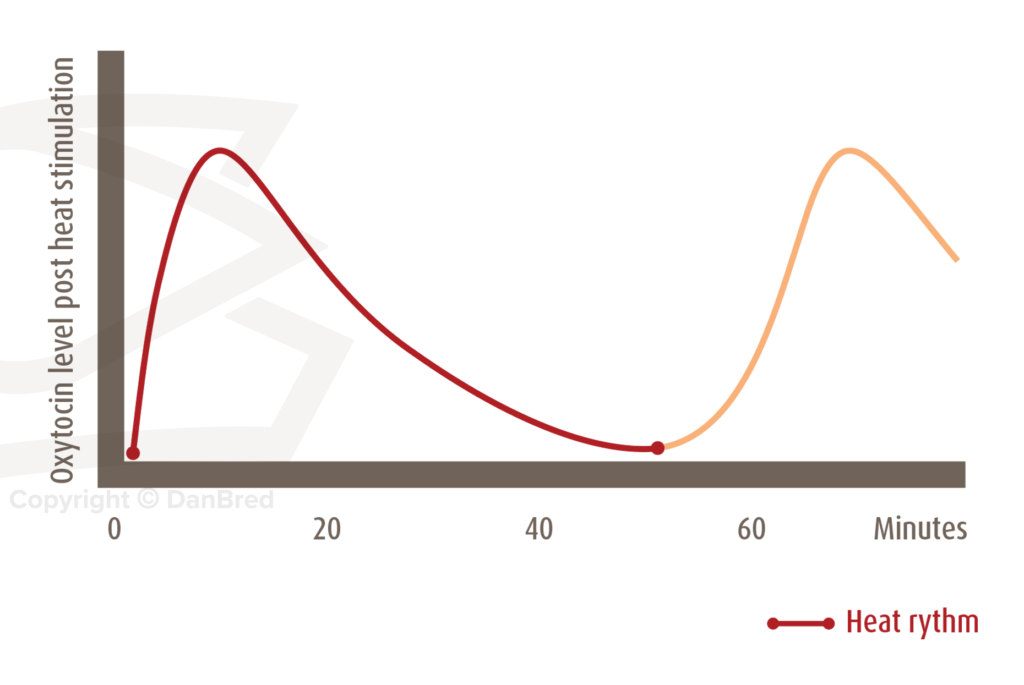

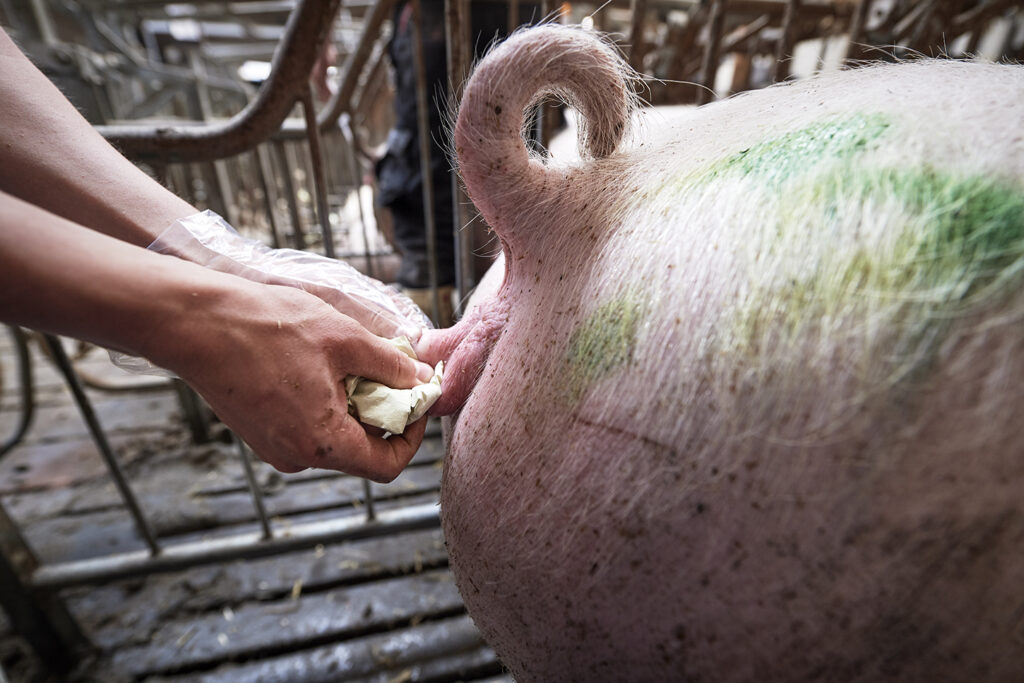
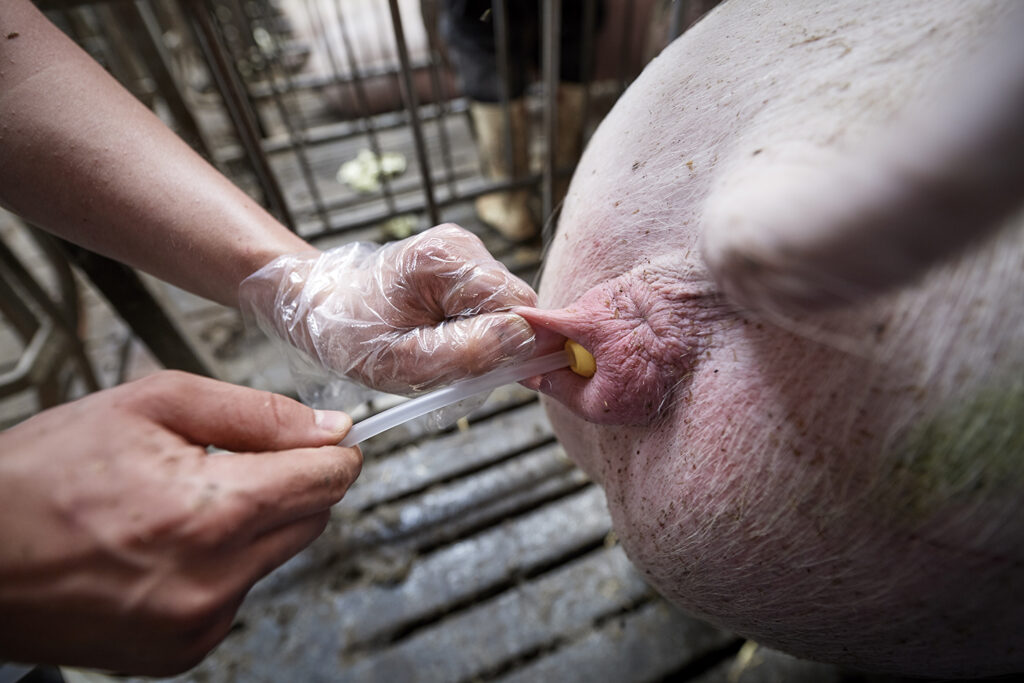
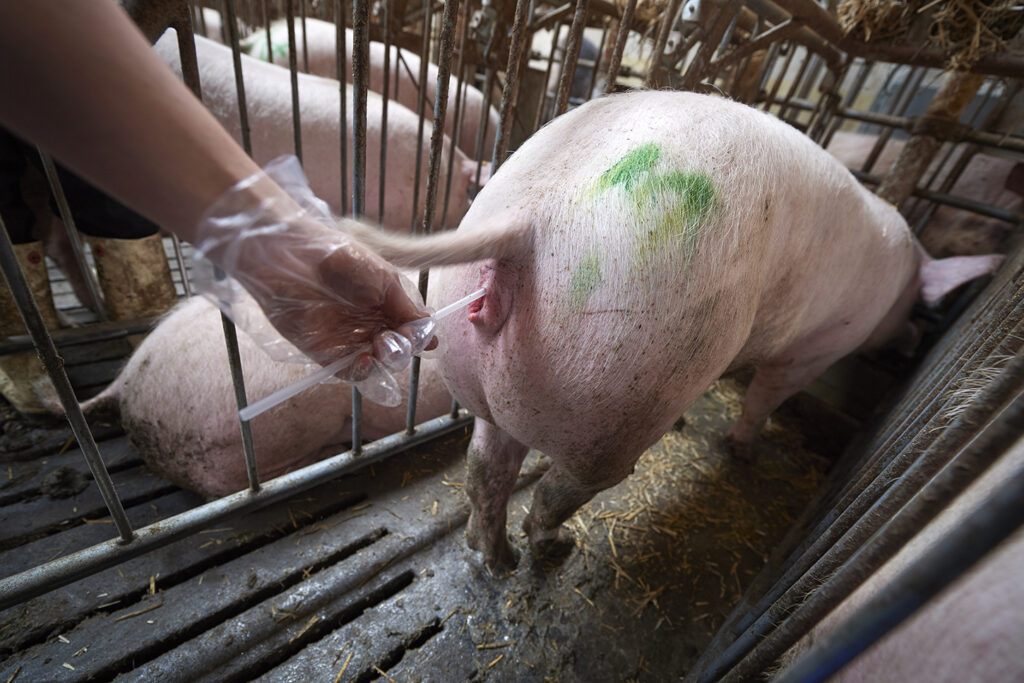
Reduce stress
- Keep at least one hour between feeding and the start of insemination
- Be calm around the animals
Optimise timing
- Let gilts and sows have nose-to-nose contact with a boar through equipment or use a boar wagon.
- When using a boar wagon, utilise the oldest most odorous boar available.
- For greatest results, let the boar have contact with only the 5-6 sows currently being inseminated.
- Using 2 different boars can enhance the effect
- Inseminate gilts no later than 12 hours after standing heat has been detected. Repeat after 12 hours.
- Sows should be inseminated no later than 12 hours after standing heat has been detected. Repeat insemination 24 hours later.
Follow the five point plan when stimulating sow and gilts
Stimulate the sow for 3-5 minutes.
Start with sows that show the strongest signs of heat.
The five point plan:
- Apply pressure to the flank area by gently lifting or pushing the flank.
- Lift the groin and gently rub the underline.
- Push with a fist below the genital opening when doing so check the vulva for clear discharge
- Grip and massage the corners of the sows’ hips
- Performed a back pressure test (riding test) the sow must be willing to let you sit
Master conventional insemination technique
- Have all supplies ready for insemination.
- Introduce the boars to the females that are to be bred.
- Do not allow boar exposure if matings will not happen immediately.
- Ensure hygiene by cleaning the vulva with a disposable tissue. Do not reuse tissue paper.
- Apply obstetric, non-spermicidal gel to the catheter. Do not cover the opening with the gel.
- Gently separate the lips of the vulva and insert the clean sterile head of the catheter.
- Push the catheter gently forward and upwards into the reproductive tract at a 45 degree angle through the vagina into the cervix.
- When a firm resistance is felt, pull slightly back while twisting the catheter to achieve a firm lock.
- Remove the semen dose from the semen box and resuspend semen gently by rotating the dose.
- Mount the semen tube/pack and raise it above the level of the vulva.
- Ensure there is nose to nose contact with the boar and continue the stimulation of the sow through the breeding process (this mimics the boar to enhance uterine contractions .
- Uterine contractions will pull the semen into the uterine tract over a period of 2-5 minutes.
- Do not squeeze the semen dose or perforate the dose to increase the speed of insemination.
- In the event of backflow of semen:
- Reposition the catheter, ensure boar exposure and adequate stimulation.
- If more than 1/3 of the dose is lost due to backflow, start over with a new dose of semen.
- After the insemination is complete, bend the catheter to prevent backflow and leave in the sow or gilt for another 5-7 minutes to help continue cervical contractions and better semen transport.
- Gently remove the catheter with a firm but gentle downward pull.
- It is recommended for further stimulation after breeding to leave a boar or 2 in front of the bred females for 2 hours.
Ensure conception
- Leave sows and gilts in stress-free surroundings, do not moved or re-group for 5 to 7 hours.
- Feed according to on farm protocols
Learn from experience
- Record quality of insemination by making a technician scoreboard where each insemination is given a rating by the technician who did the insemination.
- Include ratings when analysing productivity, this could show if a technician is in need of extra training.
Record unexpected events like bleeding or back flow.
References
Fisker, B. N. (2003): Ro efter inseminering, Meddelelse nr. 586, Videncenter for svineproduktion, Den rullende afprøvning
Flowers W. L. (1996): Performance expectations of different mating systems; Leman Swine Conference 25:63-66
Hedeboe, A. M. (2006): Sammenligning af én kontra to løbninger per so pr. brunst, Meddelelse nr. 734, Videncenter for svineproduktion, Den rullende afprøvning
Madsen, M.T.; Mathiasen, J.; Olesen, D.R.: (2001): Effekt af human stimulation af søer på oxytocin i blodbanen ved kunstig sædoverføring. Meddelelse nr. 532, Landsudvalget for Svin
Nissen, A. K.; Soede, N. M.; Hyttel, P.; Schmidt, M.; D’Hoore, L. (1997): The influence of time of insemination in relation to time of ovulation on farrowing rate and litter size in sows, investigated by ultrasonography Theriogenology 47: pp 1571-1582.
Sørensen, G. (2009): Højere faringsprocent, Erfaring nr. 0912, Videncenter for svineproduktion, Den rullende afprøvning




